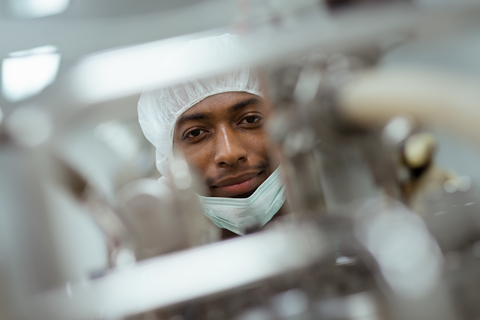Synthetic bone implant makes blood cells

Scientists have engineered a bone-like implant to have its own working marrow which is capable of producing healthy blood (New Scientist, 2017). The implant may help treat several blood and immune disorders without the side effects of current treatments.
One of the jobs of bone marrow is to produce red blood cells from stem cells. Bone marrow transplants are sometimes needed to treat immune diseases that attack these stem cells, or in certain types of anaemia, in which the body can’t make enough blood cells or clotting factors.
These kinds of transplants involve replacing damaged marrow with bone marrow stem cells from a healthy donor. But first, the recipient must have their own bone marrow stem cells wiped out to make room for the transplanted donor cells. This is done using radiation and drugs, which can have serious side effects, such as nausea and loss of fertility.
To get round this problem, Shyni Varghese at the University of California, San Diego, and her colleagues have engineered an implant that resembles real bone. It provides a home for donor cells to grow and proliferate, bypassing the need for any drug and radiation treatment.
The implant has two main sections; an outer bone-like structure and an inner marrow, both engineered from a hydrogel matrix. Within the outer structure, calcium phosphate minerals help stem cells from the host grow into cells that help build bone. The inner matrix creates a home for donor bone marrow stem cells.
When placed beneath the skin in mice, the implant grew into a bone-like structure and produced a working marrow. Blood cells made by the donor stem cells inside the implant were able to get into circulation where they mixed with the host’s own blood cells. Six months later, blood cells from both the donor and host were still circulating around the body.
Shyni Varghese said “It’s an additional accessory for the host. They have their own bone tissue and now an additional one that can be used if needed. It’s like having more batteries for the bone.”
Since the implant contributes to the host’s blood supply, rather than replacing it altogether, it cannot be used to treat people who have blood cancers, who would still need to have their own bone marrow stem cells wiped out to cure the disease.
Edward Gordon-Smith, Emeritus Professor of Haematology at St George’s, University of London, said that the study is a “splendid achievement”. He said the structure could also offer a new way of studying blood stem cells and how blood disorders arise.








